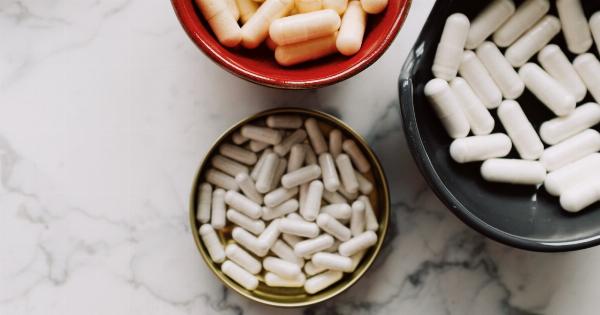Orgasms are one of the most intense and pleasurable experiences that the human body can have.
They are often considered the culmination of sexual pleasure and are known to release a rush of endorphins, leaving individuals feeling deeply satisfied and relaxed. However, despite the basic physiological process being similar, male and female orgasms are not the same. In this article, we will delve into the unique characteristics and differences between male and female orgasms.
The Anatomy of Male and Female Orgasms
Understanding the anatomy involved in orgasms is essential to grasp the unique nature of male and female orgasms.
For males, orgasms involve the release of semen through ejaculation. The process begins with stimulation of the penis or other sensitive areas, leading to increased blood flow to the genitals and general sexual arousal.
It then progresses through various stages, including the plateau phase, where sexual tension builds up, and the ejaculation phase, in which rhythmic contractions expel semen from the body.
Female orgasms, on the other hand, involve the rhythmic contractions of the pelvic muscles and increased blood flow to the clitoris, labia, and vaginal walls.
They can be achieved through clitoral stimulation, vaginal penetration, or a combination of both. Unlike male orgasms, female orgasms do not involve the release of fluids.
Duration and Intensity
When it comes to duration and intensity, there are some general differences between male and female orgasms.
Typically, male orgasms are known to be shorter in duration, with the actual orgasmic contractions lasting around 3-10 seconds.
Additionally, the intensity of a male orgasm can vary but tends to be more focused on the physical release and pleasurable sensation. Some men report feeling a strong sense of euphoria during ejaculation.
In contrast, female orgasms can vary significantly in terms of duration. Some women experience short, intense orgasms lasting only a few seconds, while others can have longer-lasting orgasms lasting up to a minute or more.
The intensity of female orgasms is often described as waves of pleasure, spreading throughout the body and sometimes accompanied by a sense of emotional release. Many women also report experiencing multiple orgasms, where they can have successive orgasms without a refractory period.
Refractory Periods
A notable difference between male and female orgasms is the existence of a refractory period.
The refractory period refers to the recovery phase after orgasm during which a person may need time to regain arousal and become responsive to further sexual stimulation.
In males, the refractory period is well-known and often lasts from a few minutes to several hours. This period can increase with age and varies between individuals.
During this time, it is generally more challenging for a man to achieve another orgasm or maintain an erection.
For females, there is often no refractory period, or it is significantly shorter. Many women can quickly recover and experience further orgasms without the need for a waiting period.
This ability is commonly associated with multiple orgasms that women may be capable of achieving within a short period of time.
Clitoral vs Vaginal Orgasms
One of the ongoing debates surrounding female orgasms revolves around the concept of clitoral versus vaginal orgasms.
Some researchers argue that both types of orgasms are unique, while others believe that all female orgasms are essentially clitoral in nature.
A clitoral orgasm is achieved through direct or indirect stimulation of the clitoris, which has a high concentration of nerve endings dedicated to sexual pleasure.
This form of orgasm is generally easier for most women to achieve and provides intense pleasure.
Vaginal orgasms, on the other hand, are achieved through internal stimulation of the vagina and the G-spot, a sensitive area located in the front wall of the vagina.
Some argue that this type of orgasm is deeper and more intense than clitoral orgasms, while others believe that it is simply an indirect stimulation of the internal clitoral structures.
Psychological Factors
While the physical processes and sensations of orgasms are significant, it is crucial not to overlook the role of psychology in the experience of male and female orgasms.
For men, the psychological aspect of orgasms often centers around the build-up of excitement, anticipation, and the eventual release. It can be affected by various emotions, stress levels, and mental states.
Performance anxiety and concerns about satisfying a partner can also play a role in male orgasms.
For women, the psychological factors influencing orgasms can be multifaceted. Emotional connection, feeling desired and appreciated, a sense of safety, and a positive body image can all help women reach orgasm more easily.
Conversely, stress, anxiety, and self-consciousness can hinder or delay female orgasms.
Frequency and Achievability
When it comes to the frequency and achievability of orgasms, there are some noteworthy differences between males and females.
Generally, males report having orgasms more often than females. This can partly be attributed to the refractory period, which typically allows men to have orgasms during each sexual encounter.
Biological factors play a role here, as testosterone drives sexual desire and the ability to reach orgasm in men.
Women, on the other hand, often require more focused stimulation and may need longer periods of sexual arousal to reach orgasm. Achieving orgasm through intercourse alone can be more challenging for women due to the limited direct clitoral stimulation.
It is worth noting that every individual is unique, and these differences are generalizations rather than absolute rules.
Sexual anatomy, personal preferences, emotional connection, and many other factors can all influence the experience of male and female orgasms.





























